en ja es pt
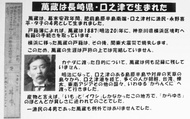
migration
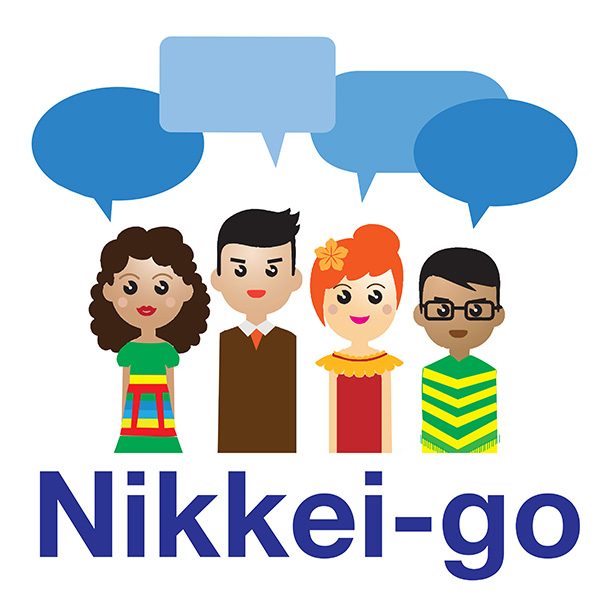
Arigato, baka, sushi, benjo, and shoyu—how often have you used these words? In an informal survey conducted in 2010, we found that these were the most frequently used Japanese words among Japanese Americans living in Southern California.
For Nikkei, the Japanese language symbolizes the culture of one’s ancestors, or the culture that was left behind. Japanese words often get mixed in with the language of the adopted country, creating a fluid, hybrid way of communicating.
We solicited stories from May to September of 2016, and voting closed on October 31, 2016. The 23 stories (7 English; 3 Japanese; 2 Spanish; and 13 Portuguese) were received from the United States, Brazil, Canada, Mexico, and Peru.
Thank you very much to everyone who submitted their Nikkei-go stories!
For this series, we asked our Nima-kai community to vote for their favorite stories and an editorial committee to pick their favorites. In total, five favorite stories were selected.
Here are their favorites!!
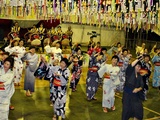
The Japanese language in the daily lives of the members of the Hikari Group of Londrina
By Alba Shioco Hino, Nilza Matiko Iwakura Okano, Kiyomi Nakanishi Yamada
English | Japanese | Spanish | Portuguese
English:

Comment from Gil Asakawa:
All the entries were really well-written and impressive, but I found my favorite was “Yokoso Y’all.” The piece won my vote because of its personal, conversational voice and directness. I liked the piece starting with the title, because it told me everything about the central point Linda Cooper wanted to make.
My wife has cousins in Atlanta (and I lived in Virginia for my Wonder Years as a kid) and it’s always a marvel—although I’m not sure why it should be so surprising, really—to hear JAs speak with a southern drawl.
I also like the look into the mixed-race experience, and the cross-cultural anecdotes about being mistaken as Latina or her friend being mistaken as American Indian.
Kudos to Cooper for capturing the spirit of her life and sharing it so generously with us!
Comment from Patricia Wakida:
For so many Nikkei, Japanese words are embedded into the language of their adopted country, and I loved how “Yokoso Y’all” demonstrated how fluid and delightful a hybrid language can be. Through playful anecdotes, author Linda Cooper wove a charming story of how her Nikkei roots have added dimensions of complexity to her life, and how deeply culture, both Japanese and that of the American South, uniquely combined with English and Japanese slang and phrases, has shaped her identity. Her voice is utterly her own, which is especially significant in a Nikkei Chronicles series that is focused on Nikkei-go—where words really do matter.
Japanese:
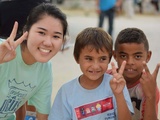
Brazil Is My Second Home—Japan Is My Spiritual Home
By Marina Tsutsui
Comment from Yoshiyuki Asahi:
I read the three Japanese essays submitted for the project. All three of them described the life of people in Nikkei communities in a clear and easy-to-understand way. I learned about how they handled a variety of issues in their life. They were all very well-written.
My favorite is “Brazil is My Second Home—Japan is My Spiritual Home” by Marina Tsutsui. In this essay, Tsutsui talks about her life story, from the time she was born in Japan to how she moved to Brazil and lived a life there, including how she studied Portuguese. For example, she says that even now, while she doesn’t have any problem communicating in Portuguese, she finds herself uttering Japanese words such as Itadakimasu, Gomen, Daijyobu, and Itai and even speaking Japanese when she can’t find words in Portuguese.
I think that everyone in Nikkei communities experiences the duality of one’s self growth as they find themselves becoming part of local communities while embracing their Japanese identity. In a simple and straightforward way, this essay teaches us how languages play a role in it. As my favorite, I would recommend it as an essay worth reading.
Spanish:

The Chuo Gakuen School: The Seeds of Prestige for the Japanese Community in Mexico
By Sergio Hernández Galindo
Comment from Javier García Wong-Kit:
For Hernandez Galindo, the Japanese language represents Nikkei identity. The story of Chuo Gakuen is unique because it became a significant icon for the Nikkei community in Mexico. The author’s research accentuates one of the main concerns of Japanese migrants: the importance of passing on to their children the language of their own education. Hernandez Galindo’s deep investigation speaks to his commitment to studying the roots and culture of Japanese migration. His findings on their political and social context are a great contribution.
Portuguese:
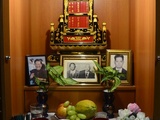
Gaijin
By Heriete Setsuko Shimabukuro Takeda
Comment from Laura Hasegawa:
The significant number of entries in the Nikkei-go contest made us, Brazilian Nikkei, proud. They consist of 11 authors and 13 widely diverse essays, each dealing with interesting topics and enjoyable themes. But the mission of the Editorial Committee was to choose a single one, which turned out to be an extremely difficult task.
Our choice was an account of unique beauty, deeply sincere in its telling of the ancestors’ legacy while at the same time conveying a feeling of longing and regret for “something” that should have been learned in due time: the Japanese language. In “Gaijin,” author Heriete Setsuko Shimabukuro Takeda capably depicts what many Nikkei attempt to rescue, namely the heritage left by their ancestors and the need to pass on this legacy to the new generations.
Also, as a result of the significant number of Portuguese-language submissions, we were given the opportunity to choose two other articles: Hudson Okada’s “Né?” and Nilton Suenaga’s “Daikon, kabu, akadaikon, akakabu.” According to Hudson, the word né is very much attuned to the Japanese way of life while Nilton, through his culinary interests, discovered the “suenaguês” used in his family.
The three selected efforts are worth translating into the site’s other languages, as they are great illustrations of the Nikkei-go spoken in Brazil!
We have closed submissions for this series, but you can still share your story on Discover Nikkei. Please check our Journal submission guidelines to share your story!
We're deeply grateful for the participation of our Editorial Committee:
Thanks to Akemi Imafuku Mora for designing our Nikkei-go logo, and our wonderful volunteers and partners who help us review, edit, upload, and promote this project!
Disclaimer: By submitting your story, you are granting Discover Nikkei and the Japanese American National Museum permission to post your article and images on DiscoverNikkei.org, and potentially other publications in print or online affiliated with this project. This includes any translations of your work in association with Discover Nikkei. You, the writer, will retain copyright. Check Discover Nikkei’s Terms of Services and Privacy Policy for more details.